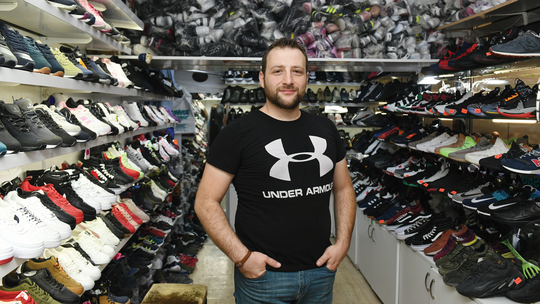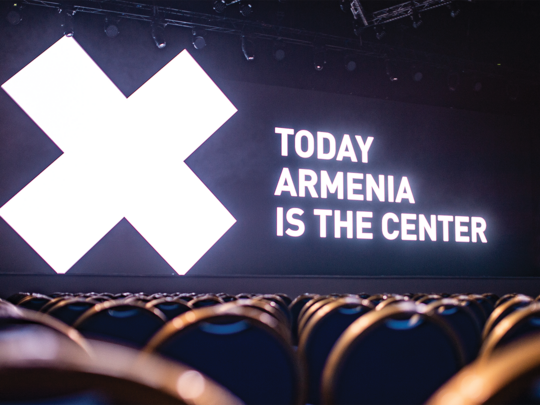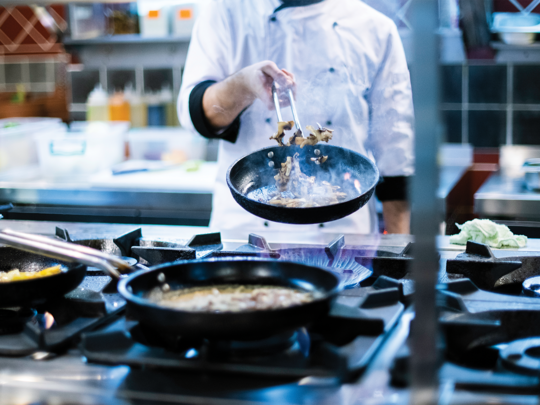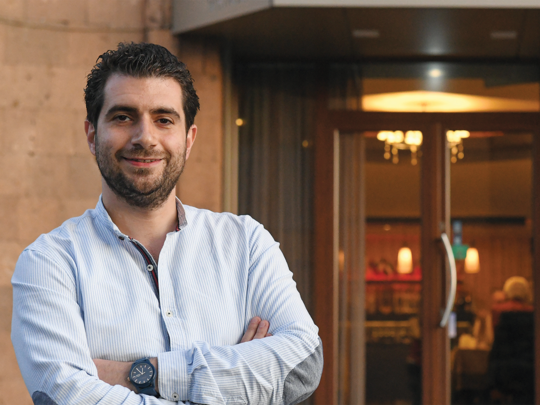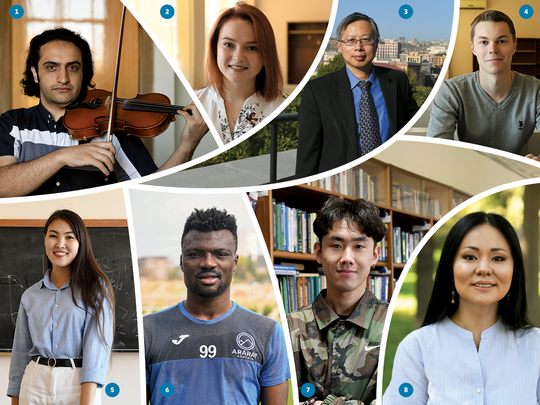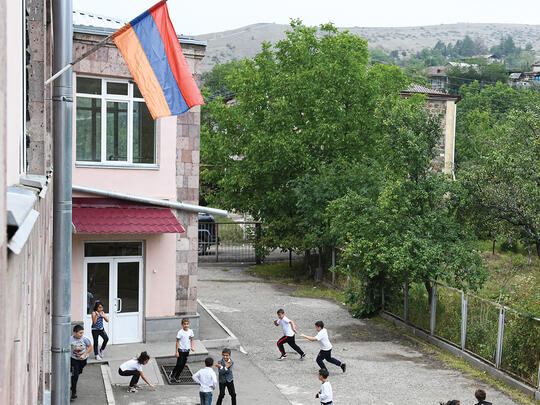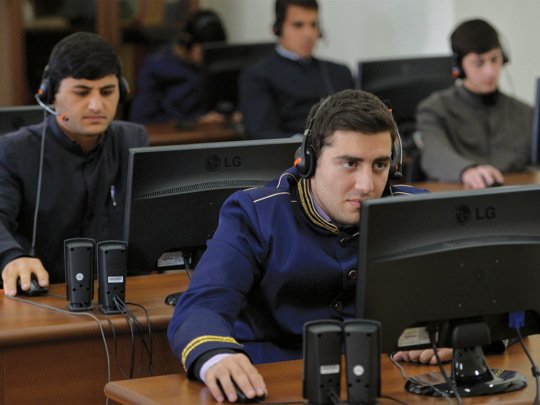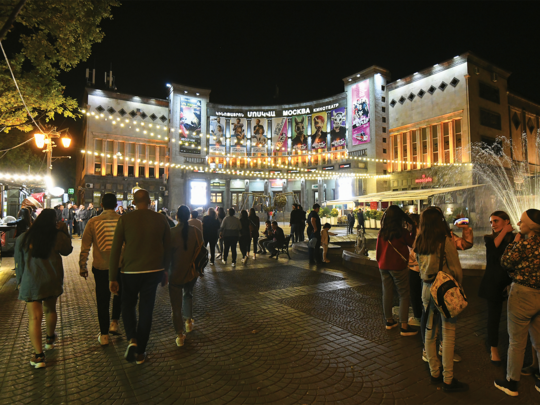A busy shoe market, a world-renowned fashion designer, and a culinary center dedicated to training Syrian-Armenian women are only a handful of the hundreds of successful Syrian-Armenian businesses concentrated in Yerevan.
Fulbright Scholar Hagop Toghramadjian traveled to Armenia after realizing his passion for discovering stories and experiences of Armenians in the broader Middle East.He decided to catalogue these businesses while also volunteering at the Aleppo NGO, where he observed the genuine enthusiasm of the Syrian-Armenian transition to Armenia. “There was a patriotic excitement about coming home. In a statistically representative study, 60% of refugees said they came to Armenia because it was the homeland, and only 15% said it was because they had nowhere else to go.” In addition to finding security and community, Syrian-Armenians have appreciated greater religious freedom and the endless possibilities that Yerevan can offer. “They’ve appreciated the Christian identity of the country, where the religious tensions are less stifling. The air is fresh with opportunity.”
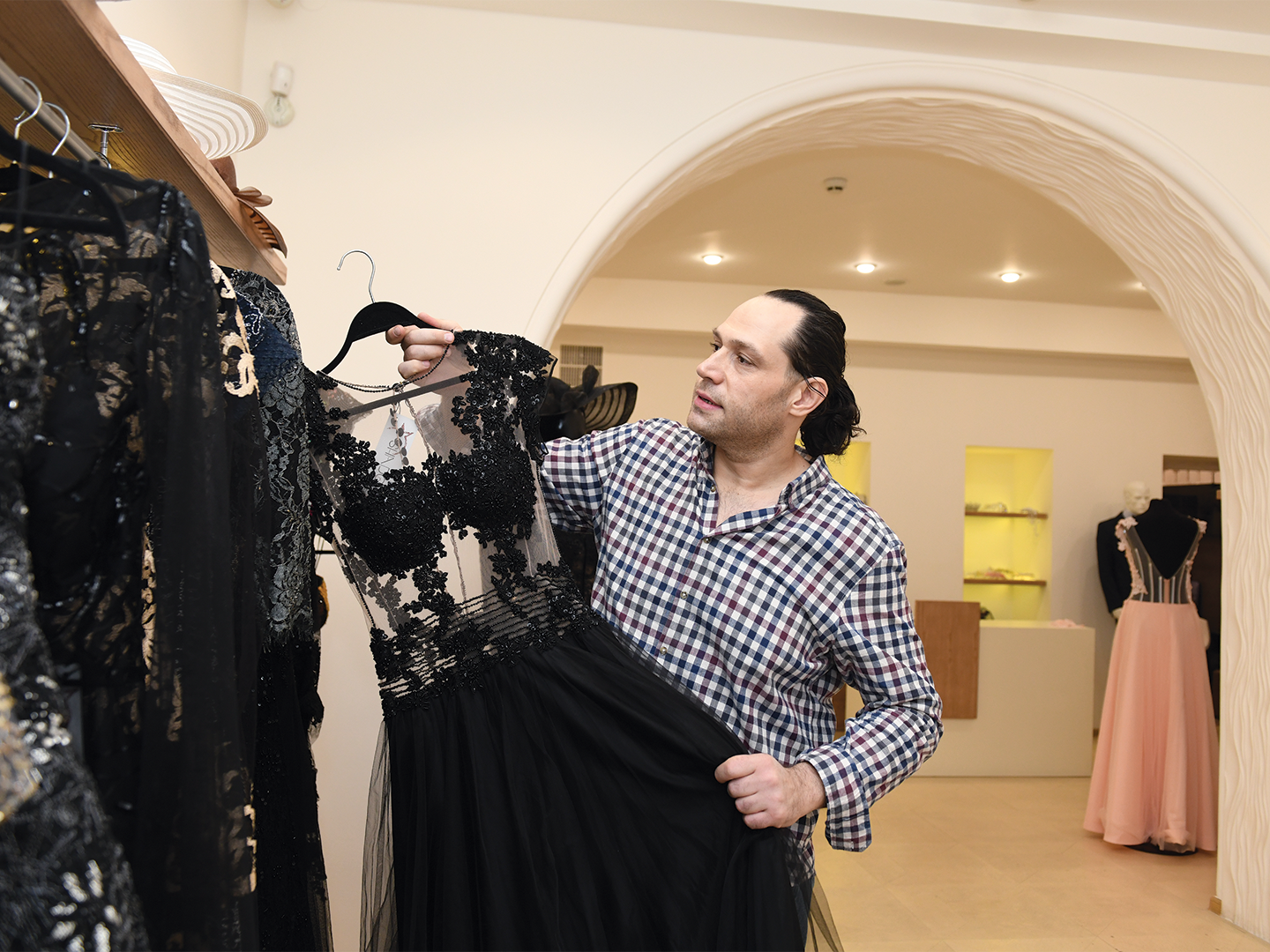
Armenians from Syria have chosen to start their new lives in Yerevan as opposed to more rural regions of Armenia because it offers more opportunities to exercise the entrepreneurial bent and business skills they developed back home. Life in Armenia’s biggest city also makes it easier to retain aspects of their close-knit communal life, a key priority for Syrian-Armenians. “Most refugees are urban people who get a lot out of living near each other,” explains Toghramadjian.
Despite their decision to immigrate to Armenia, their transition has also presented obstacles. “Almost every local Armenian owns their own apartment,” Toghramadjian said, “Now there’s not many apartments on the market and even vacant properties are relatively expensive.” For refugees who have no other choice but to spend most of their savings on rentals, making ends meet can be difficult. Subsidies from the United Nations, AGBU, and other organizations have helped. Many Syrian-Armenians still have property in Aleppo but face complex misappropriation of land and don’t intend to return.
“Syrian-Armenians have transferred their strong entrepreneurial spirit to Armenia,” noted Levon Antonyan, department head of Armenian communities at the High Commissioner’s office. “About 200 are involved in the food sector, nearly 100 are involved in manufacturing, and 16 are involved in the confectionary sector.” According to his observations, the Syrian-Armenian presence has driven the biggest increase in food services from 2013 to 2019, paving the way for employment opportunities, tourism, and economic growth.
With over 500 such businesses in Armenia to date and more to come, a surge of successful Syrian-Armenian businesses includes auto mechanics, hair salons, spice shops, and shoe stores, along with bigger employers, such as electronics, clothing, and pharmaceutical factories. Competitive in the local market and Armenia’s overall economy, Syrian-Armenians have earned much praise and recognition. “They also opened opportunities for Lebanese and Iranian restaurants,” said integration manager of Repat Armenia Dzovag Soghomonian, “which encouraged tourism as well.”
Sources of Support
Over 60% of Syrian-Armenians who have started businesses have remained open, an impressive feat considering Armenia’s struggling economy. The remaining Syrian-Armenian entrepreneurs faced problems with taxation, access to finance, and limited export markets, though these are obstacles the Armenian government claims can be tackled with the help of several NGOs.
The Armenian government founded several networks and training programs to ease Syrian-Armenian acclimation into the business sphere. Soghomonian, an Armenian refugee from Kessab, Syria, decided to contribute to her community by launching the Siramark Business Directory, an online overview of each business that places them on Yerevan’s map. After interviewing over a hundred Syrian-Armenians, Soghomonian is still receiving requests by business enterprises to join Siramark.

“With these foundations, they use social media to promote their page. They now have booklets and exhibitions, sending them through all Armenian channels, which is how they built up their marketing image,” explains Soghomonian.
The Aleppo Cuisine Center is also doing its share as a humanitarian relief group under the aegis of the Aleppo Compatriotic Charitable Organization. The center provides Syrian-Armenian refugees with clothes and food, in addition to classes and community events. The profits from the food produced by the center’s trainees go to these refugee families’ needs. “The cuisine center trains women who were not in the job market in Syria due to that country’s economy and society. But now they need to find jobs to support their families,” said Toghramadjian.
The center also features an on-site café and distributes frozen foods to restaurants and grocery stores in and around Yerevan.
With Syrian-Armenian business leaders on the rise, chances are they will eventually gain more clout in Armenian civic life. “They have citizenship, which means they can fully participate in the country’s politics if they want to,” said Toghramadjian. “At first, during the Velvet Revolution, they were quite fearful and skeptical because they saw what revolution did in Syria.” Yet as the protests progressed, numerous Syrian-Armenians grew more comfortable speaking out and joining the crowds. “For many, it was a political reawakening to see firsthand that revolutions don’t have to be violent and progress can be made through peaceful resistance.”
Banner photo by Davit Hakobyan

